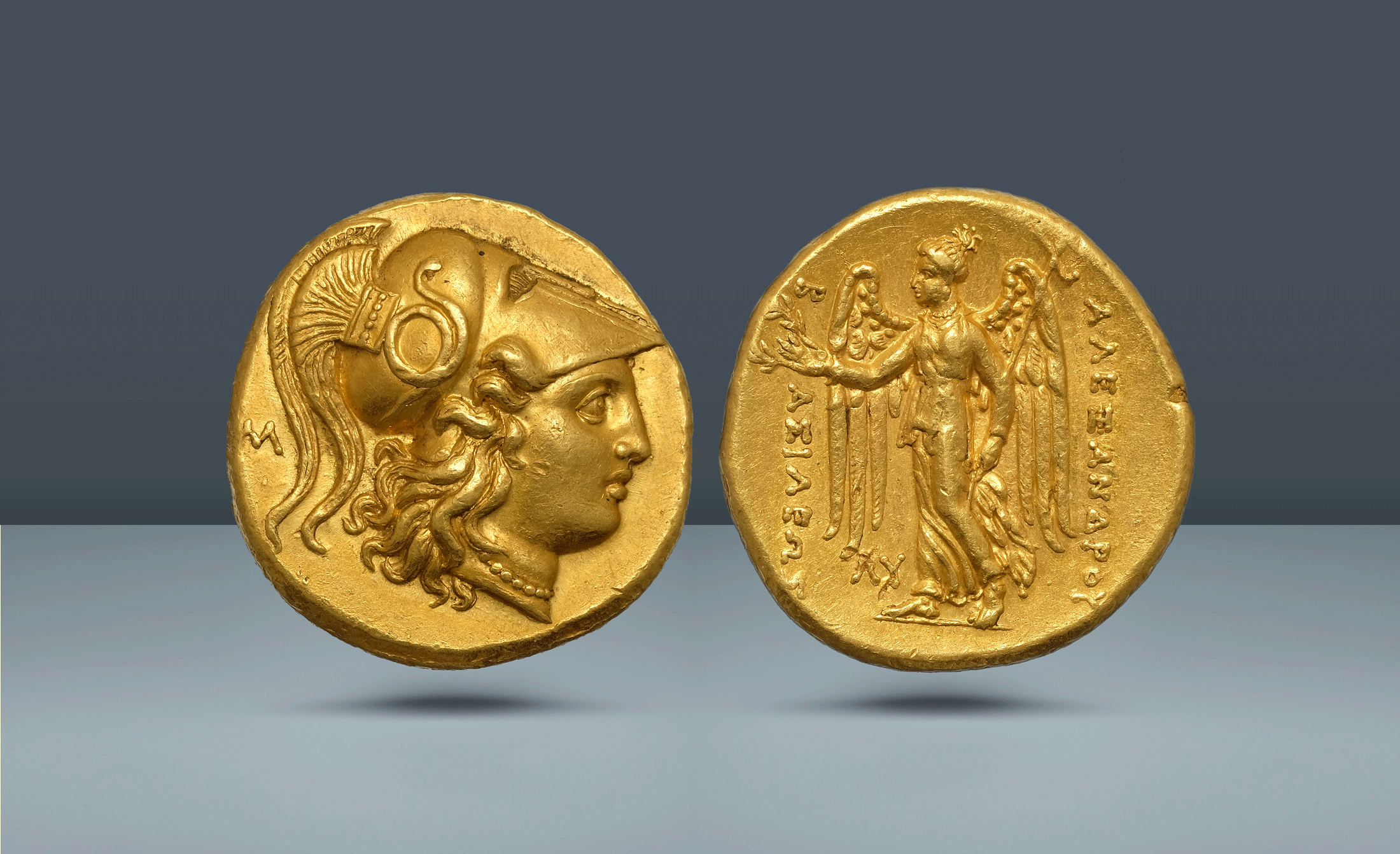Kingdom of Macedonia, Mesopotamia. Alexander the Great (posthumous), 356-323 BC, Babylon, c. 323-317 BC
Kingdom of Macedonia, Mesopotamia. Alexander the Great (posthumous), 356-323 BC, Babylon, c. 323-317 BC
AV Stater, 8.6g (18mm, 1h).
Head of Athena r., wearing Corinthian helmet with triple crest and decorated with snake; in field l., M / BAΣIΛEΩΣ - AΛEΞANΔPOY Nike, with open wings and wearing long chiton, standing l., holding stylis with her l. hand, wreath in her outstretched r. hand; low in center field, ΛY
Pedigree: From an old Swiss collection started in the 19th century.
References: Boston 88, 660; Price 469, 3691
Grade: Fantastic strike with lustrous surfaces and good centering. Beautiful Mint State
gk2040
Scroll down for more information about this coin.
As the main eastern production center of posthumous Alexandrine coinage, the Babylon mint functioned as a key node in the Hellenistic monetary system. Since it retained much of the pre-existing Achaemenid infrastructure, experienced labor force, and strategic location, Babylon was well-positioned to support the numismatic demands of the early Diadochi. Under early posthumous regents like Perdiccas and Seleucus I Nikator, the mint produced large quantities of gold staters. In fact, in his book The Coinage in the Name of Alexander the Great and Philip Arrhidaeus, Martin Price identifies Babylon as one of the most prolific and organized producers of gold staters. The consistent weight and purity of the denomination reflect the local access to reliable gold supplies and a well-managed minting process. Babylon’s continued output of high quality coinage reinforced monetary stability and political legitimacy across overlapping successor states, making the mint both a practical and symbolic anchor of imperial continuity in the turbulent decades after Alexander’s death.

